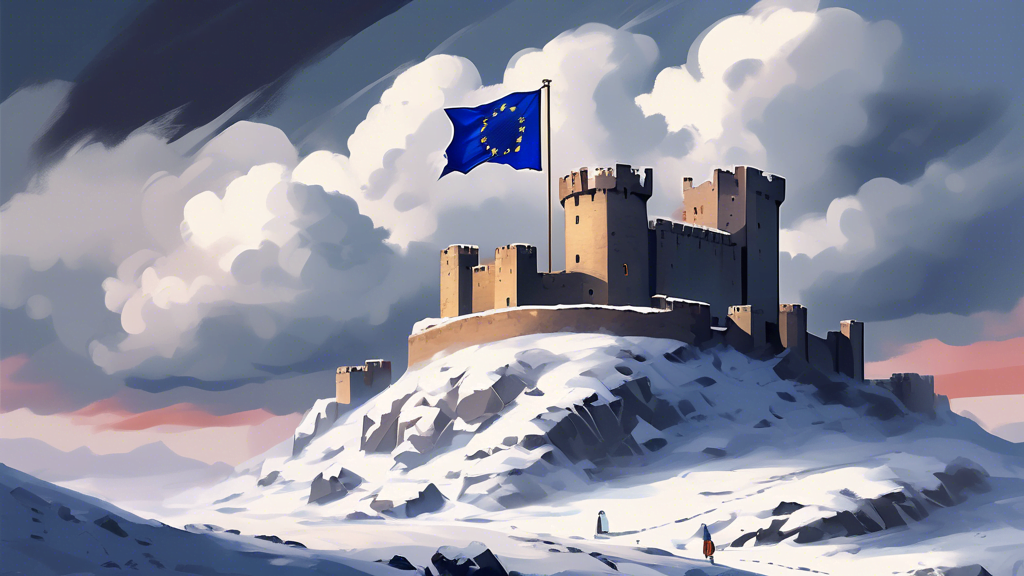The Challenges of Protecting the EU’s Eastern Border with Russia
The European Union’s eastern border with Russia stands as a critical geopolitical fault line. Spanning over 1,250 kilometers, this border traverses diverse landscapes, from the Baltic Sea in the north to the Black Sea in the south. Protecting this expansive frontier presents a complex array of challenges for the EU, encompassing security concerns, political tensions, and humanitarian considerations.
Protecting the EU: Historical Context, A Legacy of Tension
Understanding the challenges of protecting the EU’s eastern border necessitates delving into the historical context. The fall of the Soviet Union in 1991 ushered in a period of significant change, redrawing the map of Europe and creating newly independent states along the EU’s periphery. However, this transition was not without its challenges. Russia’s historical influence in the region, coupled with lingering territorial disputes, cast a long shadow over the EU’s eastern border.
The annexation of Crimea by Russia in 2014 and the ongoing conflict in eastern Ukraine have further heightened tensions. These events underscored Russia’s willingness to use military force to assert its interests in the region, raising concerns among EU member states about the security of their own borders.
Read about the Understanding and Complying with the EU AI Act: A Guide
Protecting the EU: Multifaceted Security Concerns
The security challenges along the EU’s eastern border are multifaceted and constantly evolving. These include:
1. Military Buildup and Exercises:
Russia has significantly increased its military presence and activities near the EU border. Large-scale military exercises, often conducted with little warning, raise concerns about potential spillover effects or even intentional provocations.
2. Hybrid Warfare:
Russia has demonstrated its proficiency in hybrid warfare tactics, blending conventional military operations with cyberattacks, disinformation campaigns, and economic coercion. These tactics aim to destabilize neighboring countries, sow discord within the EU, and undermine Western institutions.
3. Energy Security:
The EU’s dependence on Russian energy, particularly natural gas, creates a vulnerability that Russia has been willing to exploit for political leverage. Disruptions to energy supplies, as witnessed in recent years, can have significant economic and political consequences for EU member states.
4. Migration and Border Security:
The EU’s eastern border faces challenges related to irregular migration, human trafficking, and organized crime. Russia has, at times, been accused of instrumentalizing migration flows as a means of exerting pressure on neighboring countries and exploiting vulnerabilities within the EU.
Protecting the EU: EU Response: Strengthening Defense and Resilience
In response to the evolving security landscape, the EU has taken steps to strengthen its defense posture and enhance resilience along its eastern border. These measures include:
1. Increased Military Presence:
NATO has enhanced its forward presence in the Baltic states and Poland, deploying multinational battlegroups to deter potential aggression. The EU has also established its own battlegroups, designed for rapid deployment in response to crises.
2. Cybersecurity Cooperation:
Recognizing the growing threat of cyberattacks, the EU has intensified cooperation among member states to share intelligence, develop cyber defense capabilities, and counter disinformation campaigns. The EU has also imposed sanctions on individuals and entities involved in cyberattacks targeting member states.
3. Energy Diversification:
The EU is pursuing a strategy of energy diversification to reduce its reliance on Russian energy sources. This includes investing in renewable energy, exploring alternative gas suppliers, and improving energy efficiency.
4. Support for Neighboring Countries:
The EU has provided significant financial and technical assistance to neighboring countries, such as Ukraine, Moldova, and Georgia, to strengthen their governance, border security, and resilience against Russian pressure. This support aims to promote stability and democratic values in these countries, making them less susceptible to Russian influence.
The Importance of Dialogue and Diplomacy
While strengthening its defense and resilience is crucial, the EU also recognizes the importance of maintaining dialogue and diplomatic channels with Russia. Communication and engagement are essential for managing tensions, preventing misunderstandings, and addressing shared challenges, such as climate change, terrorism, and arms control. Finding a balance between deterrence and dialogue is paramount in maintaining peace and stability in the region.
Protecting the EU: Looking Ahead: Uncertainties and Opportunities
The future security landscape along the EU’s eastern border with Russia remains uncertain. The ongoing conflict in Ukraine, coupled with Russia’s assertive foreign policy, suggests that tensions are likely to persist in the foreseeable future. The EU must remain vigilant in addressing these challenges, adapting its strategies and capabilities to counter evolving threats.
However, challenges also present opportunities for cooperation. Addressing shared concerns, such as climate change, pandemics, and transnational crime, requires international collaboration. By finding common ground on issues of mutual interest, the EU and Russia can build bridges, foster trust, and work towards a more stable and secure future.
